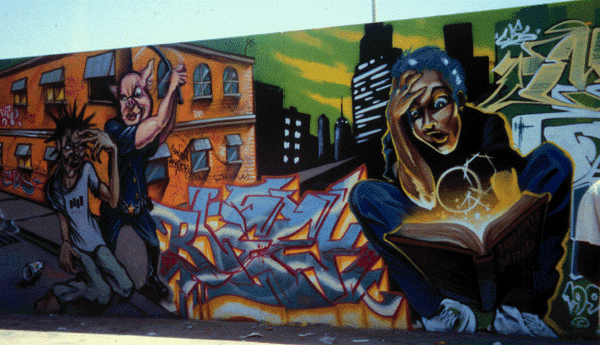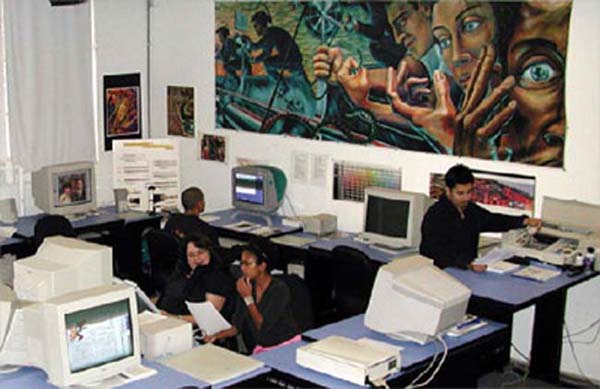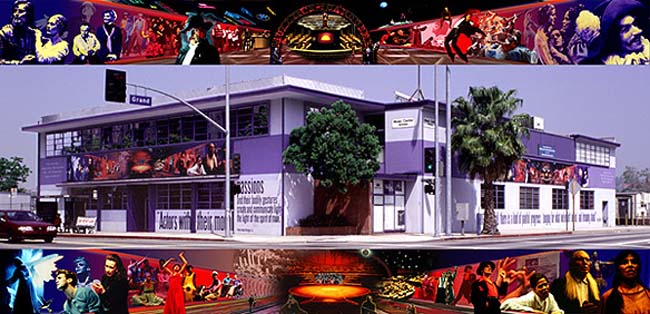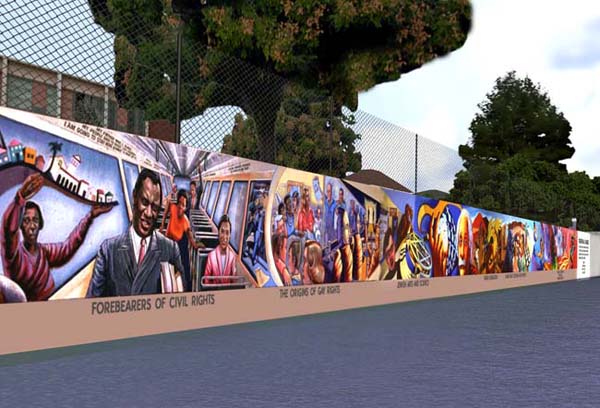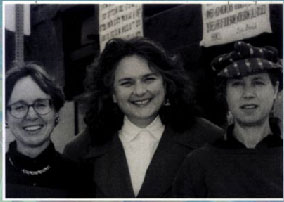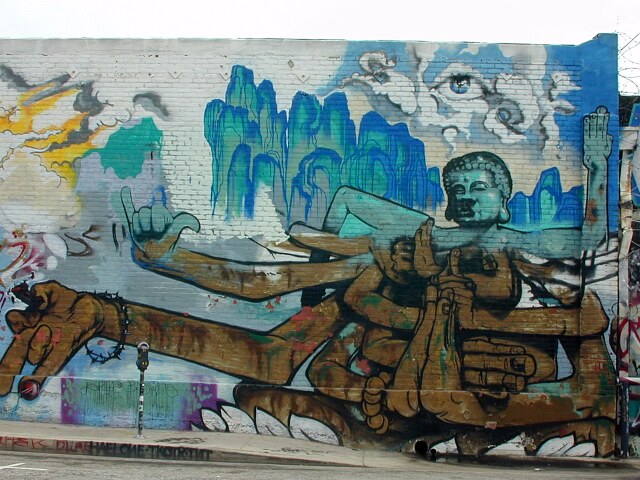 | The social and public art resource SPARC |
|
Merlose and Wilton |
Venice: "Graffiti Pit". |
Digital Mural lab |
|
In 1997 the Center Theatre Group of Los Angeles celebrated its 30 year anniversary and commissioned SPARC to produce a digital mural that would tell its history of performances in the Mark Taper Forum and Ahmanson Theatres |
Entitled, ĒIn our Victories lies our FutureĒ, the fourth digital mural created through SPARCís Digital Mural Lab was produced in collaboration with the Local 11 Hotel and Restaurant workers union in 1998 |
Initiated in the Fall of 2002 and completed in 2003 as joint collaboration between the UCLA/SPARC Digital/Mural Lab and the UCLA Visualization portal, the Great Wall of Los Angeles 3-D model brings the signature work of Professor Baca and SPARC into the virtual world of real-time 3-D visualization |
|
Founded in 1976 by muralist Judith F. Baca, painter Christina Schlesinger, and filmmaker Donna Deitch. The Social and Public Art Resource Center (SPARC) is an arts center that produces, preserves and conducts educational programs about community based public art works.SPARC is particularly committed to producing and promoting work that reflects the lives and concerns of Americaís ethnically and economically diverse populations including: women, the working poor, youth, the elderly and newly arrived immigrant communities . Our ultimate purpose is to examine what we choose to memorialize through public art |
Thanksgiving |
Budda |
In November of 1997 the first International Jornada de Arte Publico y Muralismo was held in Tlaxcala, Mexico. At this conference the following manifesto was authored by Irene Herner of Tepozitlan Mexico and Judith F. Baca artistic director and founder of SPARC and passed by resolution by the attendees.
MANIFESTO
We the artists of the first International Jornada de Arte Publico y Muralismo en Tlaxcala Mexico November 1997 in the presence of the Consejo Mundial de Artistas Visuales, A.C. COMAV, the Asociaciůn de Creadores de Arte Pķblico de Mťxico A.C. & the Sociedad de Autores de las Artes Plasticas SOMAAP, declare:
1. That cultural expression is a basic human right from which we learn from others and express ourselves.
2. That the legacy which remains of great civilizations are its monuments and cultural products which provide insight into our common human condition.
3. That a common denominator in the history of public art is the process of inclusion in which artists and audience interact to create a vision of shared dreams, aspirations and struggles. Public art is an unending public process of communication which is instrumental to the creation of a civil society.
4. It is people who make nations. The context of the individual is fundamental to personal and national identity. Every person and their community must have the opportunity to develop and tell their stories which represent them to others. This self expression is innately public because it is the basis of language, humankind''s anonymous creation from which visual language emanates and is continually reinvented. This reinvention can only flourish with guaranteed freedom of expression.
5. That governments should not be the makers of culture but the facilitators by establishing truly "public space" and supporting public dialogue while providing resources for artistic expression. That government officials should not engage in any type of censorship or undue obstruction of artistic process.

